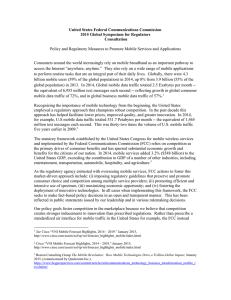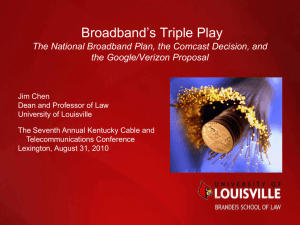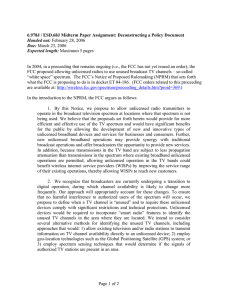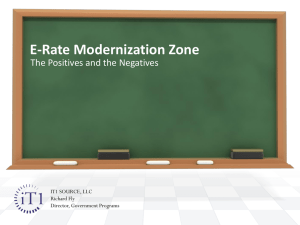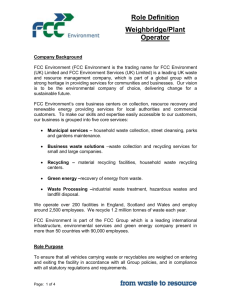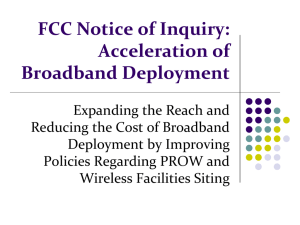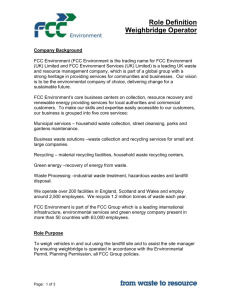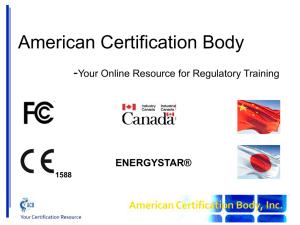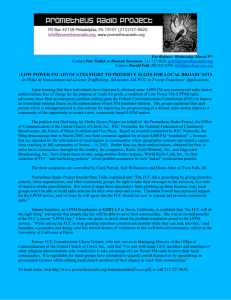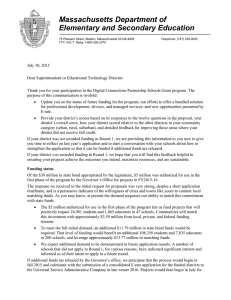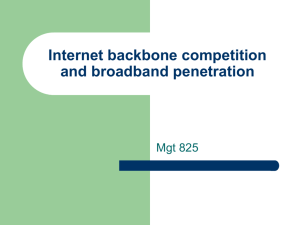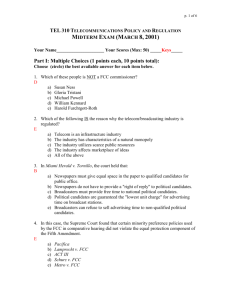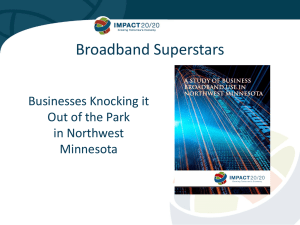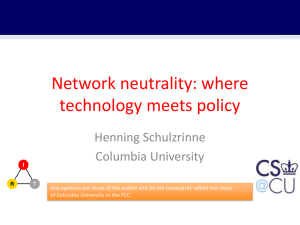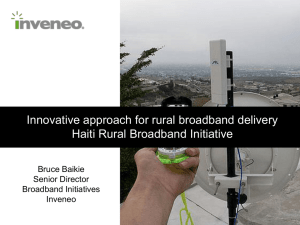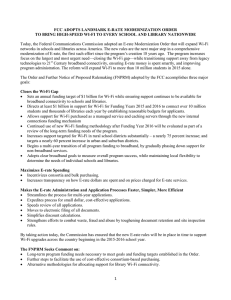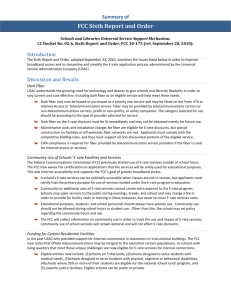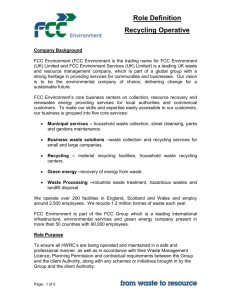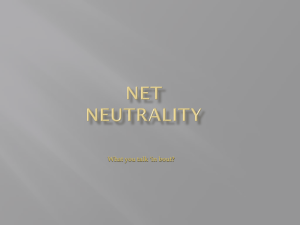Broadband Public Policy Update
advertisement
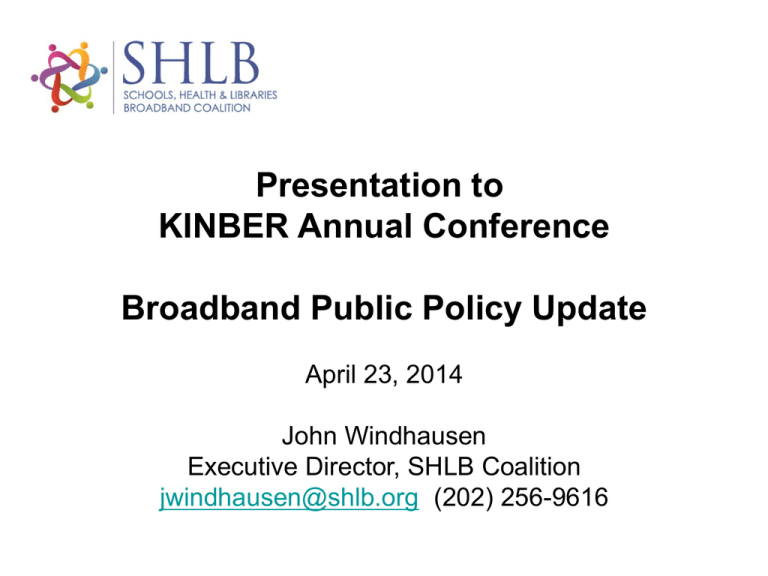
Presentation to KINBER Annual Conference Broadband Public Policy Update April 23, 2014 John Windhausen Executive Director, SHLB Coalition jwindhausen@shlb.org (202) 256-9616 Mission Advocate for programs and policies that enable anchor institutions to obtain open, affordable, high-speed broadband connections to the Internet. SHLB Membership K-12 Schools (CoSN, SECA) Community Colleges (AACC, ITC) Libraries (ALA, COSLA, ULC, Alaska State Library, Alaska Library Association, N.J. State Library, ARSL) Public Media: Access Humboldt Higher Education (EDUCAUSE, U. of Alaska, Center for Digital Inclusion) Foundations (Gates, Benton, New America) State Mapping Agencies (Partnership for Connected Illinois, New Mexico Broadband Authority) SHLB Membership (Cont’d) National R&E Networks: (Internet2/USUCAN) State R&E Networks: The Quilt, Merit, NYSERNET, MCNC, OARNet, I-Light, OSHEAN, UEN Broadband Companies: Google, ENA Broadband Consulting Firms: ICF, ZeroDivide Municipal: NATOA, ILSR Wireless: Mobile Beacon SHLB Advocacy Issues: 2009-2013 • • • • • BTOP and BIP Programs National Broadband Plan FCC’s 2010 E-rate Reform FCC’s 2011 Connect America Fund FCC’s 2012 Rural Healthcare Connect Fund • U.S. Ignite • Digital Literacy SHLB Advocacy Issues: 2014 • • • • E-rate Reform Connect America Fund Healthcare Connect Fund Unlicensed Wireless ConnectED • “99-in-5” – 99% of school children should be connected to high-speed broadband in 5 years • Private Sector Commitments – Sprint, AT&T, Microsoft, Verizon, Apple, O’Reilly Media, AutoDesk E-rate Reform • Comprehensive: What if the FCC started from scratch? • Funding: What is the size of the problem? How much money do we need? • Streamlining: How can we improve the efficiency of the program? Comprehensive • Refocus on broadband • Diminish support for voice, web hosting, pagers • P1/P2 distinction will disappear P1: External connections P2: Internal connections Funding • Cap of $2.25 B was set in 1997 – Indexed annually for inflation in 2010 – Now $2.4 B • Demand at $5 Billion – Actual demand is higher – No money available for P2 (internal connections) Efficiencies • Streamline application and approval process – Eliminate carriers as the middleman – Eliminate technology plans for P2 – Allow evergreen approval of long-term contracts. Controversial Issues • $2 Billion available in next 2 years – how should this be spent? • Should the E-rate cap be raised permanently? • Should E-rate support a short-term surge in funding for capex? • Should dark fiber or self-provisioning be allowed? Camps • Traditional schools: no changes, just more money, especially P2 • SHLB/Education Superhighway: surge in funding for capex; • Pai/Funds for Learning: Simplify the program by awarding funding to schools and libraries based on students/patrons Connect America Fund • Former High-Cost Fund, subsidizes telcos in rural areas (not rural telcos) – FCC 2011 order shifted money to AT&T/Verizon – About ½ of short-term funding rejected by industry Connect America Fund • FCC about to open process to nontraditional providers (including R&E networks) – FCC invited “expressions of interest” – Almost 100 filed – FCC Adopting Order and Further Notice TODAY to open the CAF funding to nontelcos Healthcare Connect Fund • FCC made $400 M available to fund broadband networks to connecting rural and urban • Match of 35% is required – difficult • Consortia applications are encouraged, but local organization is challenging. Unlicensed Wireless Spectrum • FCC decision in May • Unlicensed (white spaces) spectrum can be used to extend Wi-Fi for 3-5 miles SHLB Coalition’s Annual Conference May 7-9, 2014 Marriott Marquis Hotel Washington DC www.shlb.org/events
